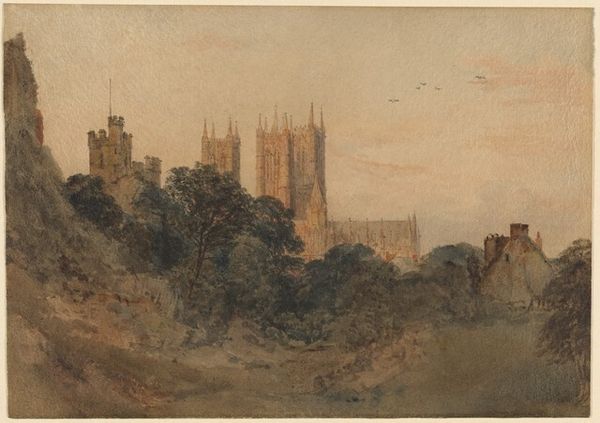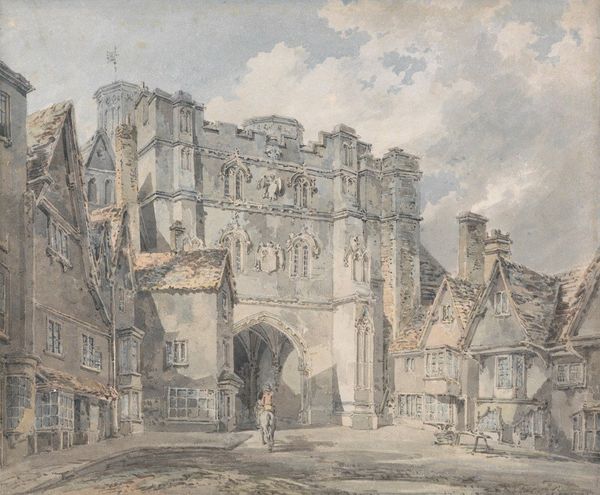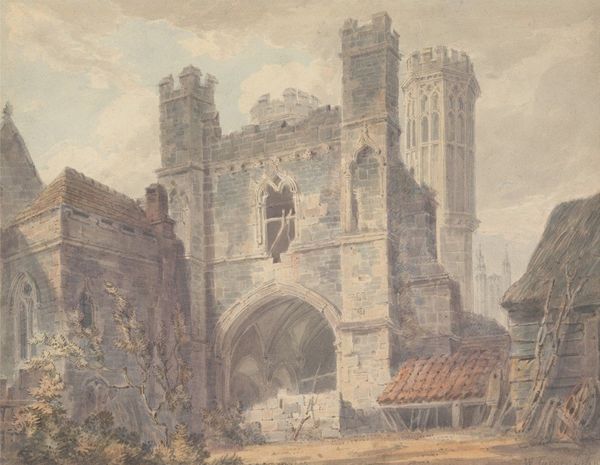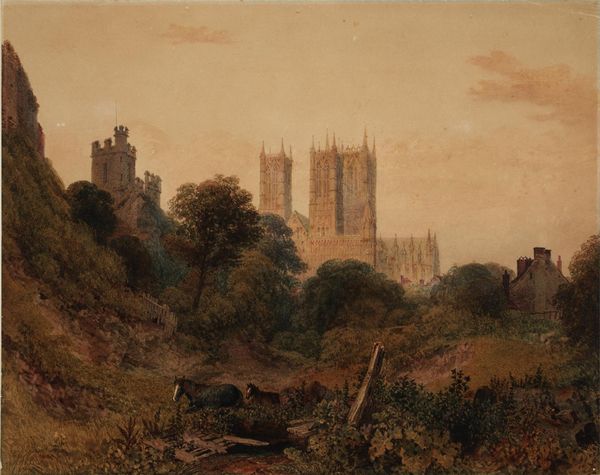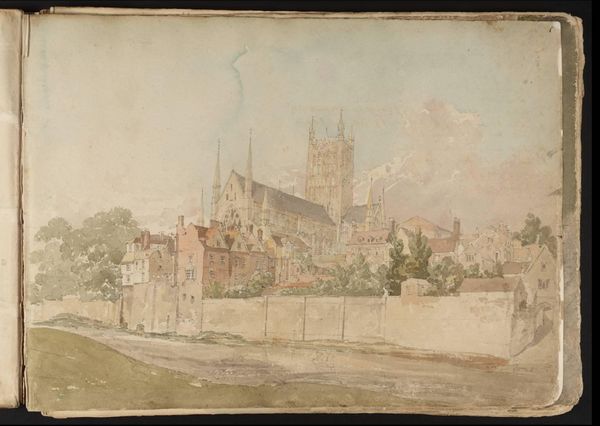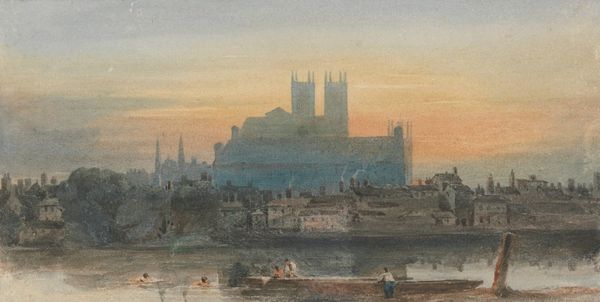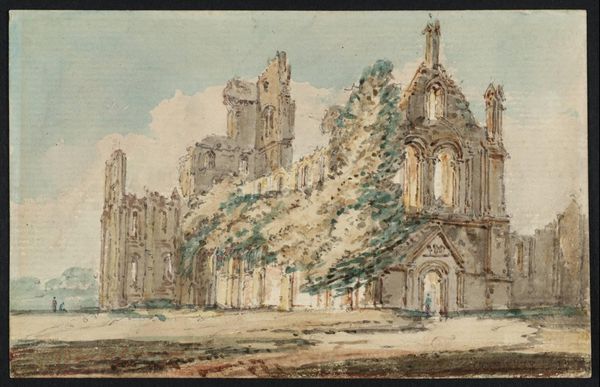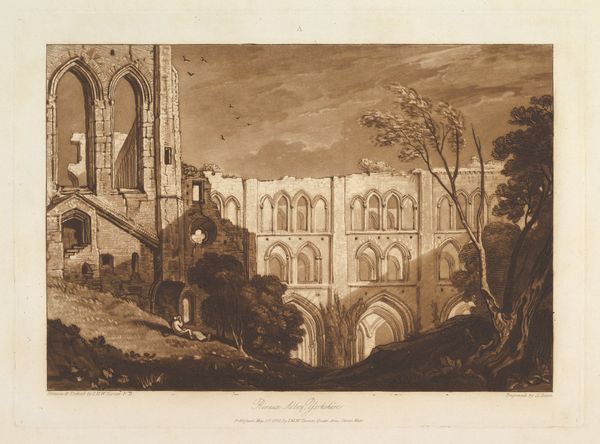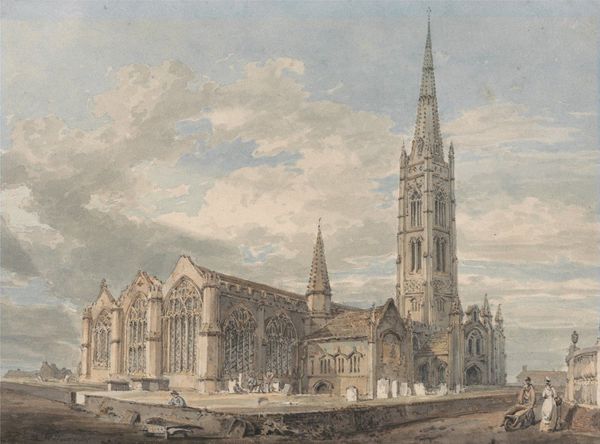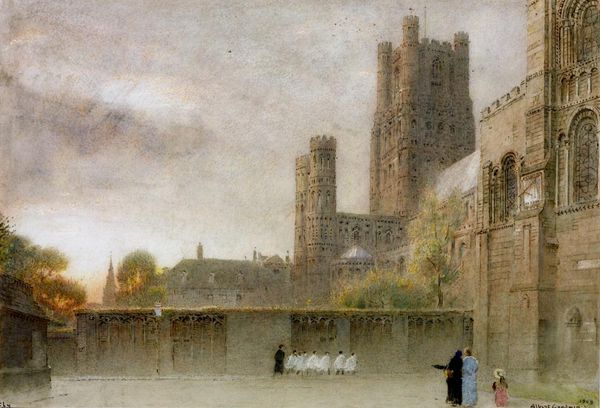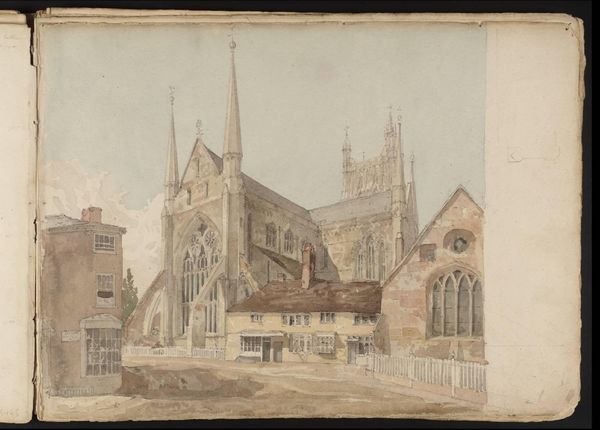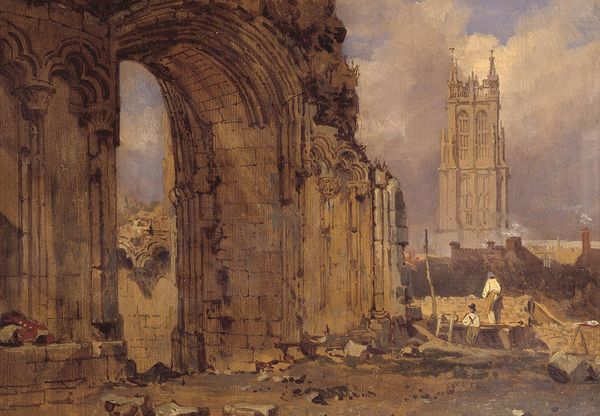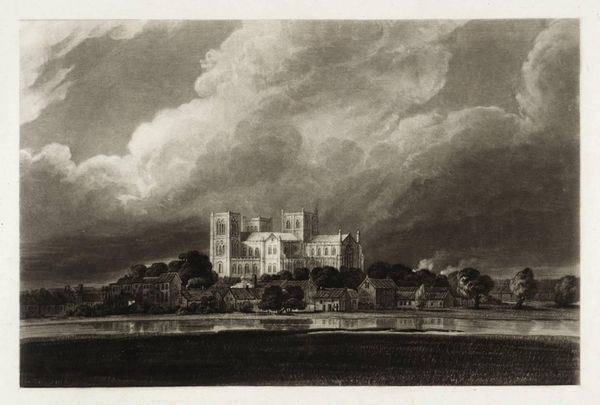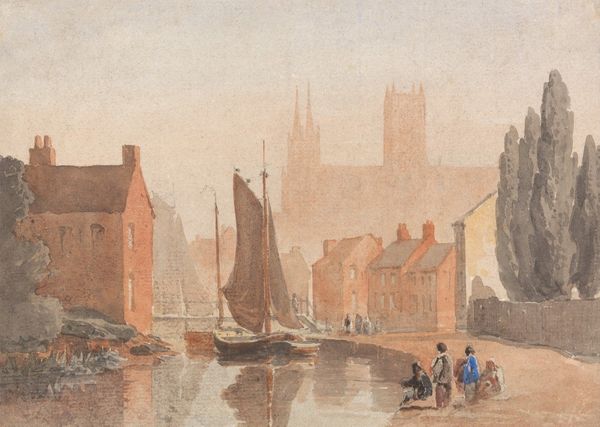
plein-air, watercolor
#
plein-air
#
landscape
#
charcoal drawing
#
oil painting
#
watercolor
#
romanticism
#
cityscape
#
watercolour illustration
Copyright: Public Domain: Artvee
Editor: So, this is "View of Ely Cathedral" by J.M.W. Turner, made around 1796. It’s a watercolor, and the first thing I notice is how ethereal it feels; the cathedral almost melts into the sky. What do you see in this piece? Curator: I see the enduring power of the cathedral, not just as a religious structure but as a cultural anchor. Notice how Turner uses watercolor to evoke a sense of memory – the building appears solid, yet also fleeting, as if it's a dream or a half-remembered story. It sits at the top of a green bluff, as if the land itself remembers it. Editor: That's interesting, a cultural anchor. It's almost like it is rising out of the landscape. Curator: Precisely. Cathedrals in Romanticism represent both spiritual aspiration and human ambition. Consider the gothic architecture, reaching towards the heavens, but built by human hands. This contrast reveals a powerful tension, an ambition tempered with the humility of being on that earth, beneath that sky. Editor: So, the hazy quality contributes to that feeling, of aspiration and transience? Curator: Absolutely. Turner isn't just depicting a cathedral; he's capturing the feeling of history, the weight of generations who have lived and died under its shadow. This cathedral’s form looms as an icon. What remains with you as you consider the overall cultural effect? Editor: I hadn’t thought about it that way – it’s not just a building, but a symbol of something much larger, a sense of time. Curator: Exactly! Symbols work on so many levels. Editor: This has completely changed my perspective of how Turner used watercolors!
Comments
No comments
Be the first to comment and join the conversation on the ultimate creative platform.
